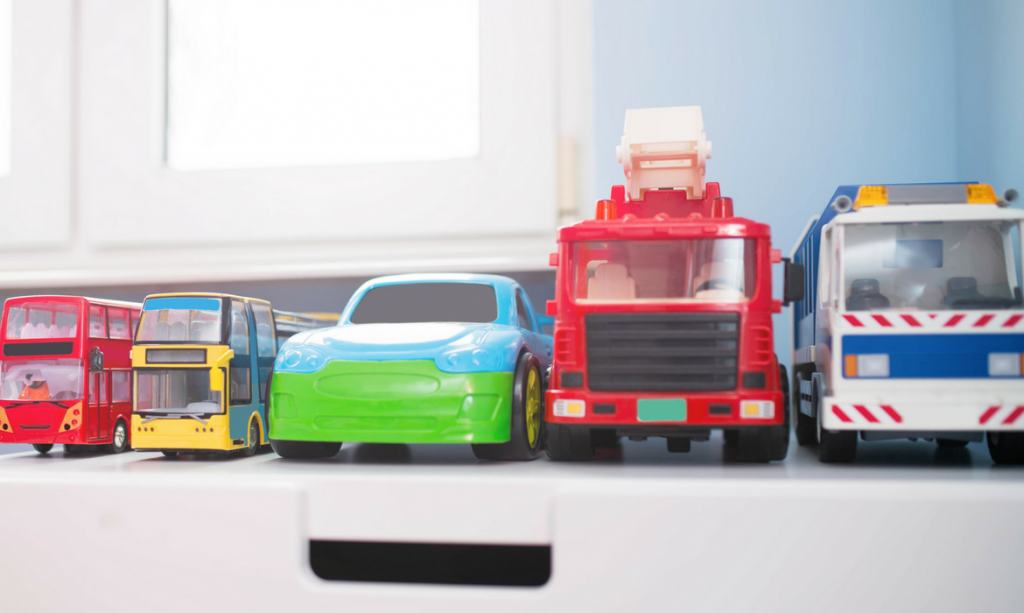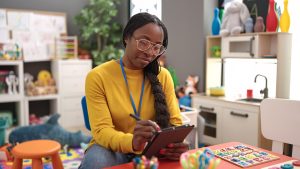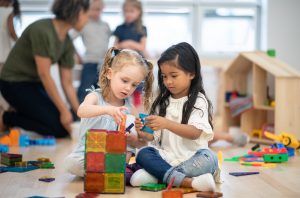In the lab, four-month-old Carlos sat on his mother’s lap watching a computer screen that showed a succession of three images of squares, each square double in size from the previous, followed by a blank screen. This series repeated until Carlos lost interest (habituated) and began to look around the room. The second half of the experiment included these same three squares in succession, followed by the squares in decreasing order. Carlos noticed this change immediately; he stared much longer at the screen, seemingly registering that this new arrangement was different from the first. [1, 2]
At age two, while at the park, Carlos informed his grandmother “Big dog!” while pointing at the Great Dane, followed by an excited “Tiny dog!” when the Chihuahua entered the dog run. At three, he definitely knew that asking for another spoonful of macaroni and cheese resulted in more of his favorite food. By the time he started kindergarten, Carlos could line up his cars in ascending size order. Each of these experiences—from noticing a change in square sizes to arranging a mini-NASCAR race—shows how Carlos’s measurement skills began very early and continue to build.
Children arrive at preschool with an everyday understanding of measurement that starts in infancy and develops throughout early childhood, often without adult assistance. How can preschool teachers build on children’s intuitive early concepts of measurement in both formal and informal ways?
Young Children’s Developing Understanding of Measurement
Young children apply early concepts of measurement in many of their everyday activities. They compare sizes of toys and portions of food, their own height to another’s, the weights of two pumpkins, and the lengths of toy trains. In exploring ways of comparing, they may use non-standard measurement tools such as hands and fingers to estimate length, blocks or squares for area, and sand and water for capacity.
They also begin to develop the vocabulary of measurement and comparison, using terms such as longer, shorter, taller, bigger,smaller, wider, heavier, and lighter. They even begin to grapple with time with the ever-useful naptime stall, “two more minutes!” In doing so, they illustrate a not-yet-mature concept of minute, but do know that more and minutes put together creates a delay!
Eventually young children’s sense of measurement develops to include new skills. They build on their abilities to compare and learn to order three or more objects. They come to understand that objects can be measured in different ways, depending on the attribute of interest. For example, at first they might consider weight and circumference when deciding who has the “biggest” pumpkin. Yet if asked the question Which pumpkin is heavier?, they come to understand that weight is the best measurement to make that comparison.

Supporting Measurement in the Preschool Classroom
Measurement applies some of the earliest mathematics that children learn, and there are many informal and formal opportunities to support this development in the classroom. In play, measurement is already very meaningful, particularly around fairness. He got more than me! She got the bigger dinosaur so I should get two little dinosaurs! He had it for a longer time so it’s my turn again! These assertions all show a strong awareness of measurement.
There are many ways that teachers can support children’s development in the classroom. Observing children throughout the day and scaffolding deeper conversations about measurement is one way. In the classroom and outdoors, comments like, My road is longest! You’re taller than me! I built a bigger castle than you! Your bucket holds more sand than my bucket! My backpack is the heaviest! and My yogurt is colder than my strawberries, abound. Teachers can help build on these understandings by asking questions such as
- How do you know?
- Can you tell me more about that?
- What can we use to measure them?
Teachers can also think broadly about children’s measurement participation in the classroom and include them in decision making and problem solving. Some examples of situations and questions to engage students in measurement include
- How many drawings can fit on the wall if we put them end to end?
- How long should the butcher paper be to cover the whole table?
- How much milk do we need so everyone has a cup full?
- How can we compare the heights of two block towers?
- How much food do we put in the aquarium each morning to feed five fish?
- Can we measure the size of the bubbles we blow?
These are invitations to problem solve in ways that matter to kids. (We need to keep the fish alive!) All of these questions are ones that children can answer with careful scaffolding. Supporting rich conversations (see the vignette Children’s Words Measure Up in our resources for teacher educators) on relatable topics helps young children mathematize their thinking and expand their measurement vocabulary.
Measurement is meaningful to children. Teachers can make it meaningful in the classroom, too!
This article is adapted from “Measuring Up” in the Data and Measurement module of DREME TE, DREME’s website of free resources for early childhood teacher educators.
[1] Cassia, V. M., Picozzi, M., Girelli, L., & de Hevia, M. D. (2012). Increasing magnitude counts more: Asymmetrical processing of ordinality in 4-month-old infants. Cognition, 124(2), 183-193.
[2] Brannon, E. M. (2002). The development of ordinal numerical knowledge in infancy. Cognition, 83, 223–240.



